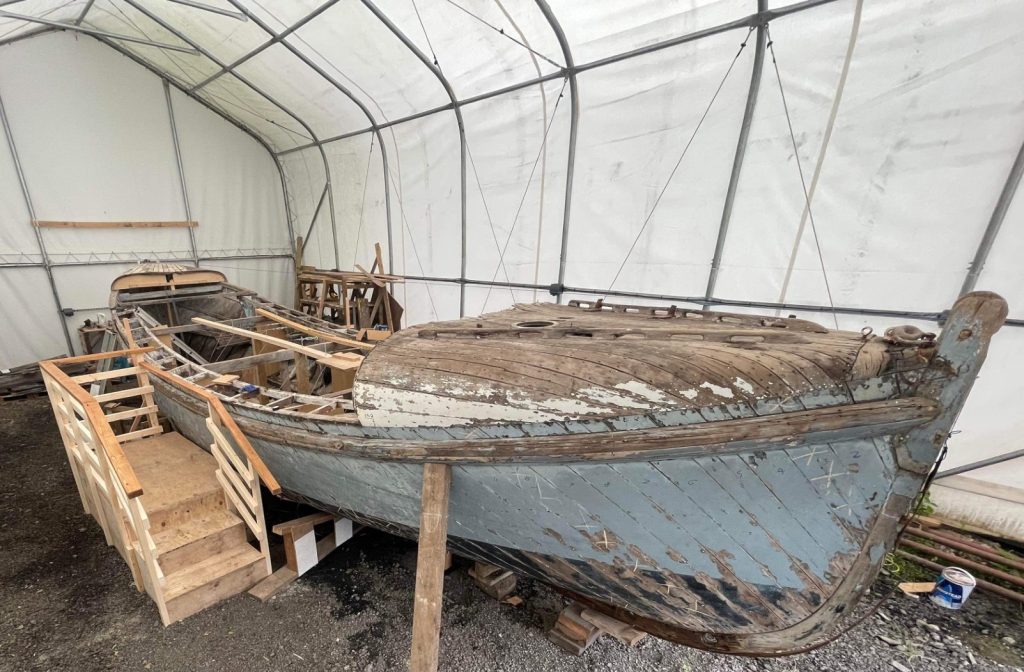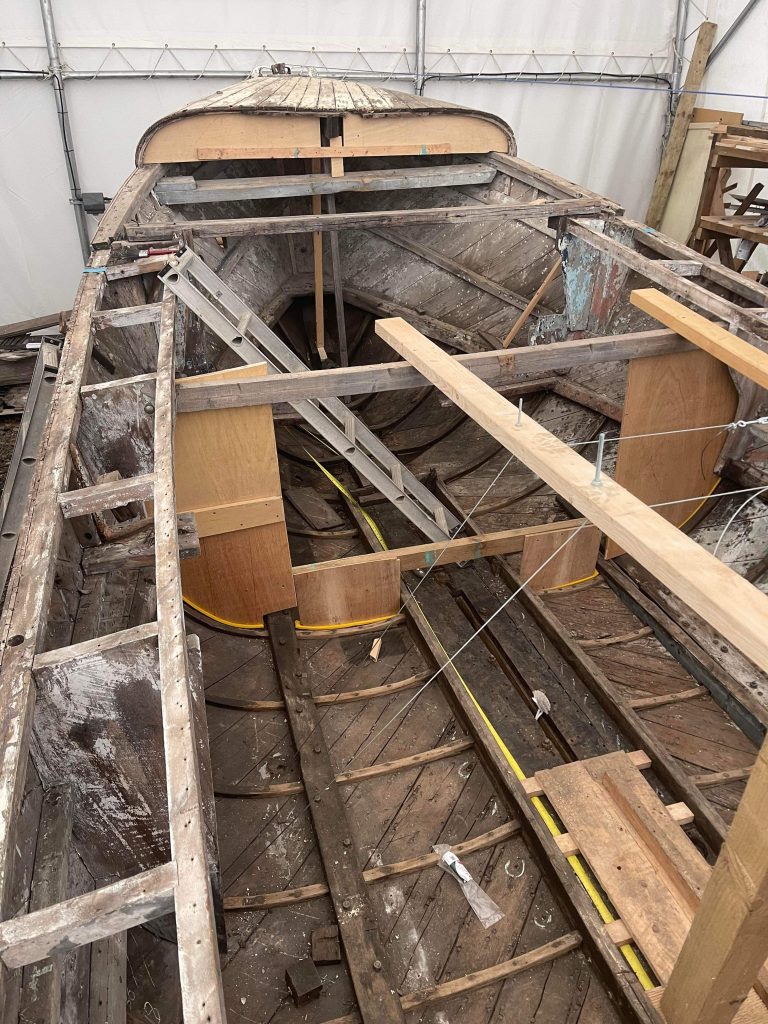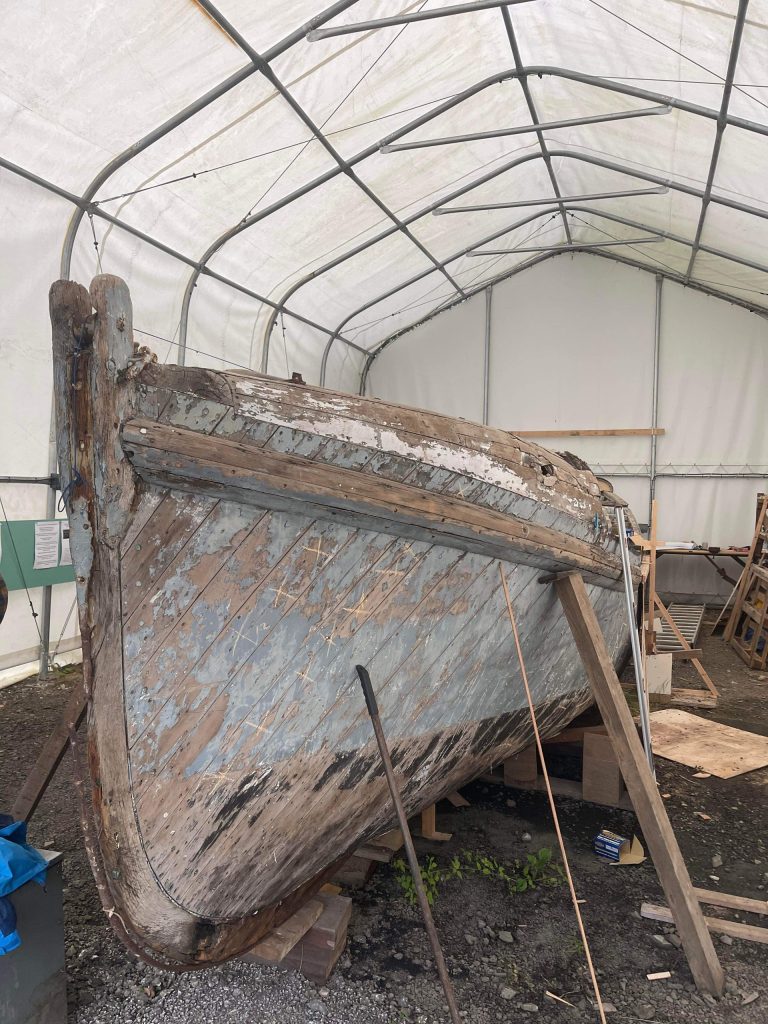
Preparing for stabilisation
Marine restoration work on JHM III is reaching the stabilisation stage. ‘Stabilisation’ is defined in the maritime context as, “the act or process of applying measures designed to arrest, retard, or prevent deterioration of a vessel, and to assure its structural integrity. This may include rendering the vessel weather resistant and watertight. The essential form of the vessel shall be maintained during this process.” (Standards for Historic Vessel Preservation Projects May 1990).
Before any significant repairs can be carried out, it has been essential to understand the boat in its present condition. A detailed survey and examination of the vessel has been undertaken as advised by the National Historic Ships and explained in a 2012 conference paper, ‘ Conserving Historic Vessels’ by Hannah Cunliffe. Adrian Stone, a National Historic Ships approved surveyor has supported us with this process.
Measures being taken
The survey results have shown that JHM III is severely distorted and weakened by dry rot in certain areas. We have been addressing the dry rot issue and are now working towards restoring her to her original form. A cradle will soon be arriving to support her, enabling us to effectively realign her to her initial profile and correct the warping.

The photo above depicts temporary molds that have been added at vulnerable locations to prevent further distortion of the boat as it is moved into the cradle.
We’ve also added bracing wires that will help keep her in shape and can be used to pull the distorted hull back to shape.
Two drop keel feature
Additionally, the picture above reveals one of the drop keel slots of the boat. It is worth noting that JHM was unusual in having two drop keels, which aided in its ability to sail effectively against the wind.

Removal of the rubbing band
Once we place the boat in the cradle, we will remove the rubbing band that runs along the outside of the boat (as seen in the photo above). This is done for two reasons. Firstly, it will make it easier for us to reshape the boat with less resistance. Secondly, it will allow us to inspect the planking behind the rubbing band for any signs of rot. To the best of our knowledge, most of the rubbing band has never been removed before, so it will be interesting to see what lies behind it.
Part of the port rubbing band was replaced after JHM III suffered during the East coast floods in 1953. She was driven into a stone wall of a house on Blakeney Quay when a storm surge ravaged coastal communities. In the aftermath of the storm she was crane lifted by the local US army and placed in Blakeney boatyard for repairs.
What’s next?
As mentioned above, we eagerly wait to receive delivery of the steel cradle, due any day now! Watch out for news of its arrival.